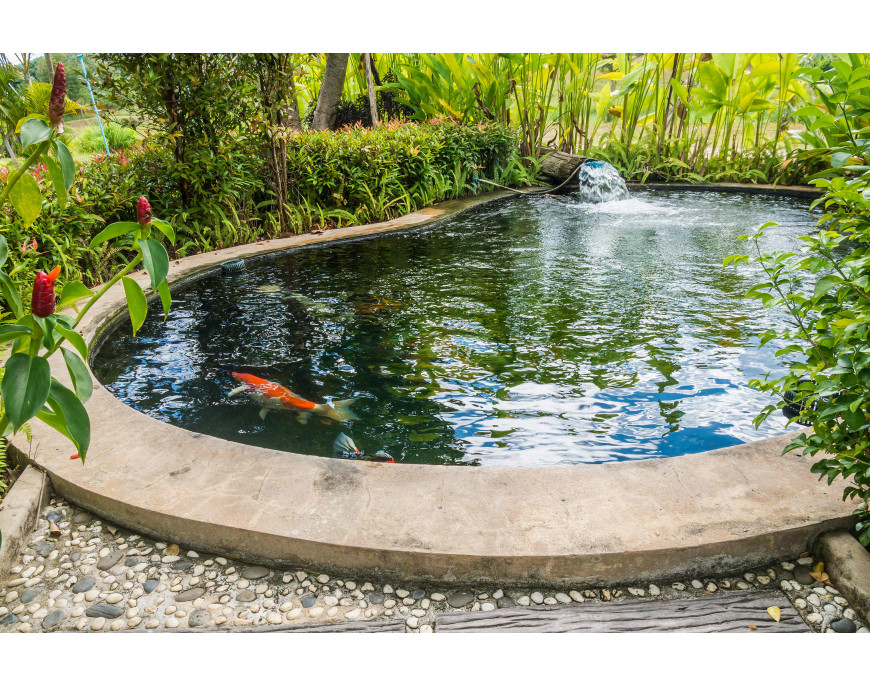How to take care of a pond?
A pond is an artificial or natural not very large body of water, most often serving an ornamental function, although sometimes it supports the surrounding nature. It is not more than 3 meters deep or more than 1 hectare in area, but the water level varies depending on the season. It usually takes its place in the garden and, irrespective of its function - ornamental or environmental - it is an important duty to take care of it. This may come as a big surprise, but it is an extremely important aspect in terms of aesthetics, appearance, and also the health of the plants in the tank. The cleanliness of the water is also extremely important for the fish and animals in the pond. However, here is the question. What can we do to make sure that the pond looks as good as it does all year round and attracts the eyes of guests and neighbours? We're coming to help! In this article you will find tips, trivia and suggestions related to caring for your pond and the plants in its area.
How to take good care of a pond?
Tank inspection
A matter of great importance in the proper care of a water body is to check and remove debris from its surface. An apt example would be leaves falling from trees directly into a reservoir. When the leaves are in the pond for a long time, they will start to rot. This will consequently lead to acidification of the water in the tank. This will have a fatal effect on the appearance of the water, as well as its pollution. So, all dried out and rotting items should be quickly and completely removed from the water body.
Checking the water reaction
Once in a while, it's a good idea to check the water reaction in our garden water tank. Why? Well, the alkaline pH of the water supports the growth of algae and is not good for fish, animals and other creatures that use this body of water.
Taking care of fish
When creating a pond and aiming to have fish in it, it is important to keep in mind what species can live in it, as well as what conditions they need to live in. To put them in a tank, it must be at least one meter deep and the number of fish in the pond should not exceed more than half of its surface area. Importantly, it is worth remembering that the water heats up quite a bit in summer, so it is important to focus on that depth. Moreover, in autumn the activity of fish is not very high, and it is worth betting on decreasing their amount of food. They will not be as greedy for food, and food residue can begin to rot and pollute the pond.
Installation of filters
Biological balance makes bodies of water self-cleaning, whereas in an issue as small as a pond, things get complicated. Silt, algae and debris become our biggest enemy in the fight for the aesthetic and healthy appearance of the tank. With help, however, come filters designed for this type of tank. When it comes to filters, we have three types:
- mechanical
- mechanical-biological
- biological
Each works in a slightly different way, but each does its job of water filtration. The mechanical filter is filled with sponge. It's where the bigger dirt and debris stops, like flies on flypaper. The second, on the other hand, is mounted on the bottom of the pond and traditionally passes water through itself, filtering it. A biological filter works by passing water through active beds. In terms of choosing the most suitable for your tank, it is worth contacting an expert who will advise on what we should bet on.
Checking and topping up the water level
Each season adds different challenges to pond care. Summer is characterized by heat, which not only heats up the water, but also leads to evaporation. For the sake of the fish and the biological equilibrium of the pond, the water level should be regularly checked and topped up. This is a necessary procedure, especially during the summer.
Choosing the right plants
Due to the fact that the water reservoir in question is a year-round endeavour, you need to pay attention to the plants that are in it and on its surface. Any of the plants you plant and those that spontaneously emerge should be hardy. Otherwise, we must store them elsewhere for the winter, and those that are suitable for winter weather should be placed at the bottom of the pond.
We hope we have been effective in helping you understand what ponds need and how to care for them. Remember that in matters of creating such a tank, as well as dealing with installations such as pumps and filters, you should consult a specialist.


This is just what I was looking for. Thanks for sharing such valuable insights!<br><br><br>My blog <a href="https://jawla360.net/author-profile/scotty5b59dk/">go to these guys</a>